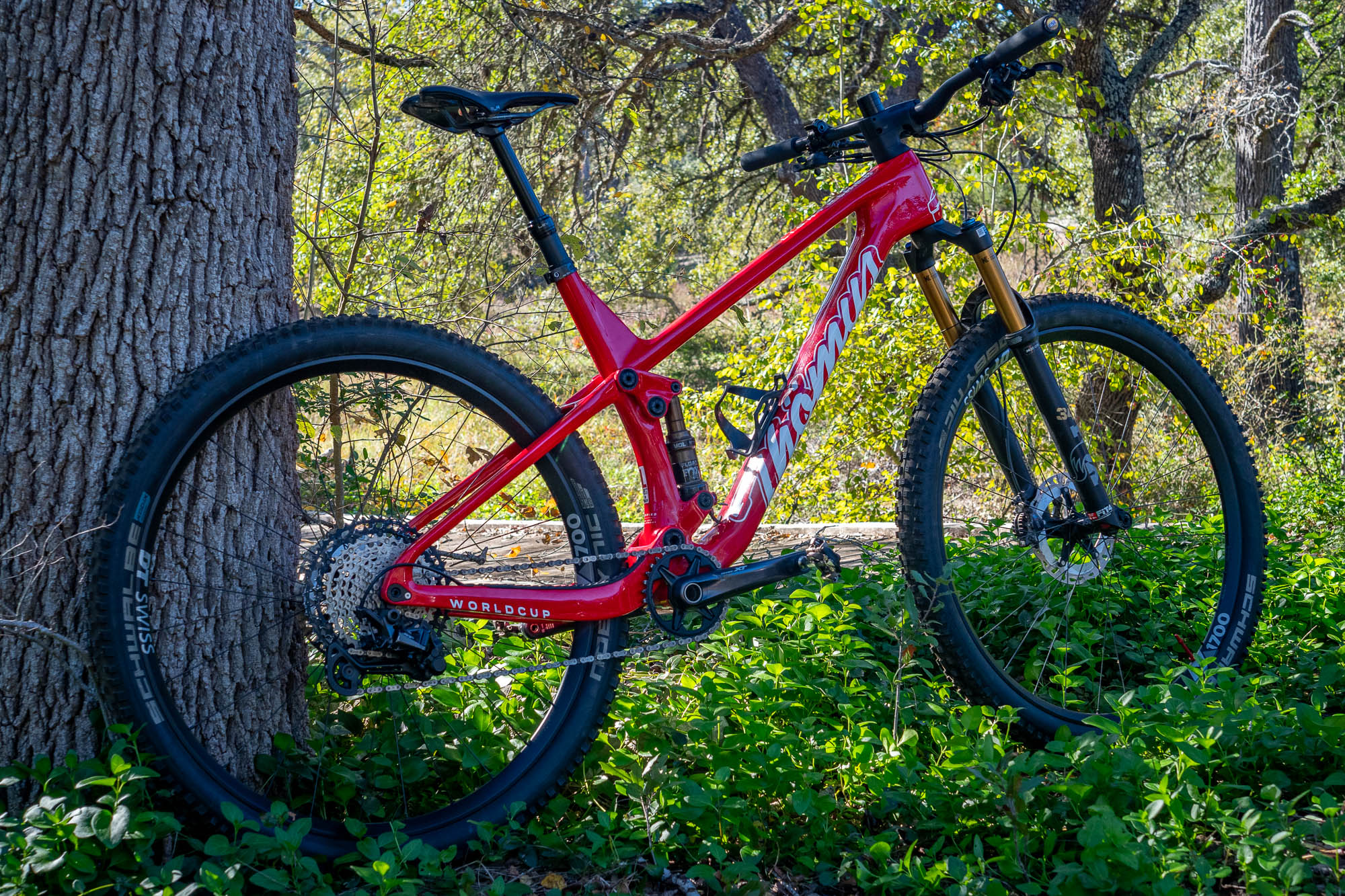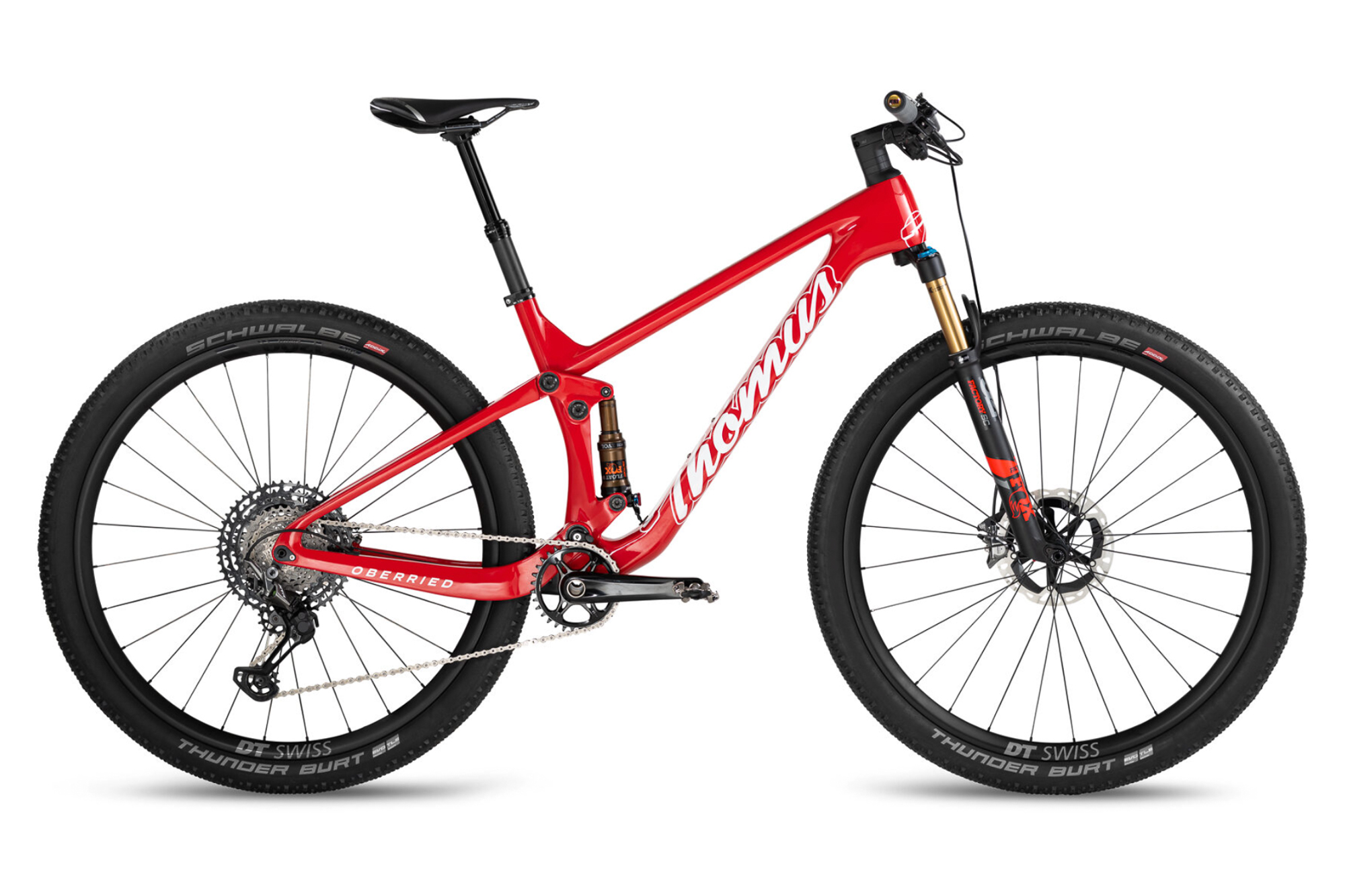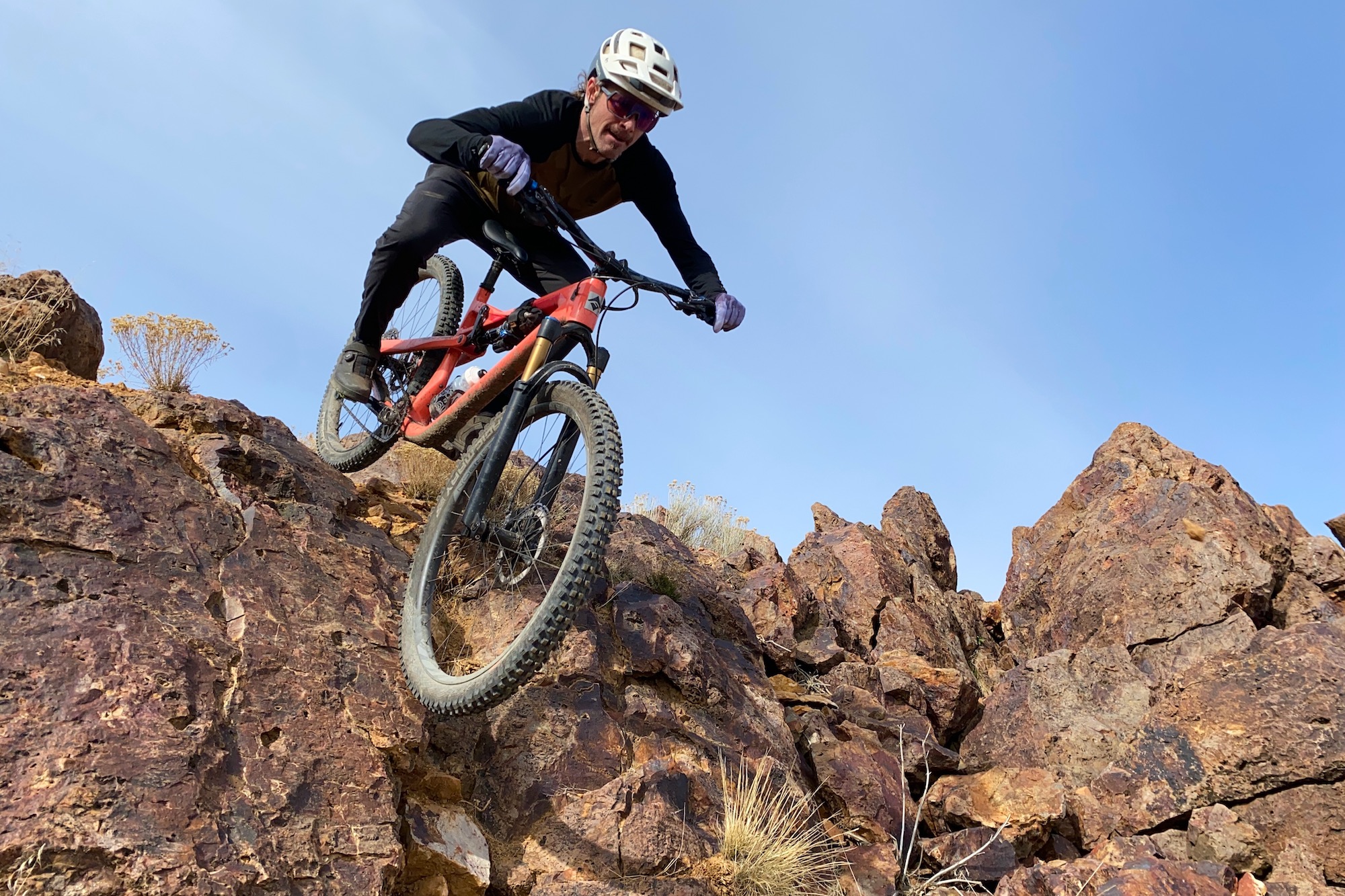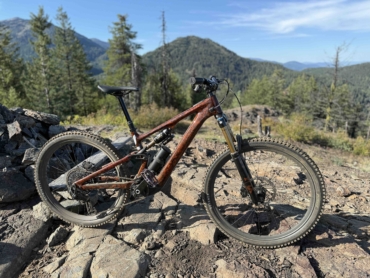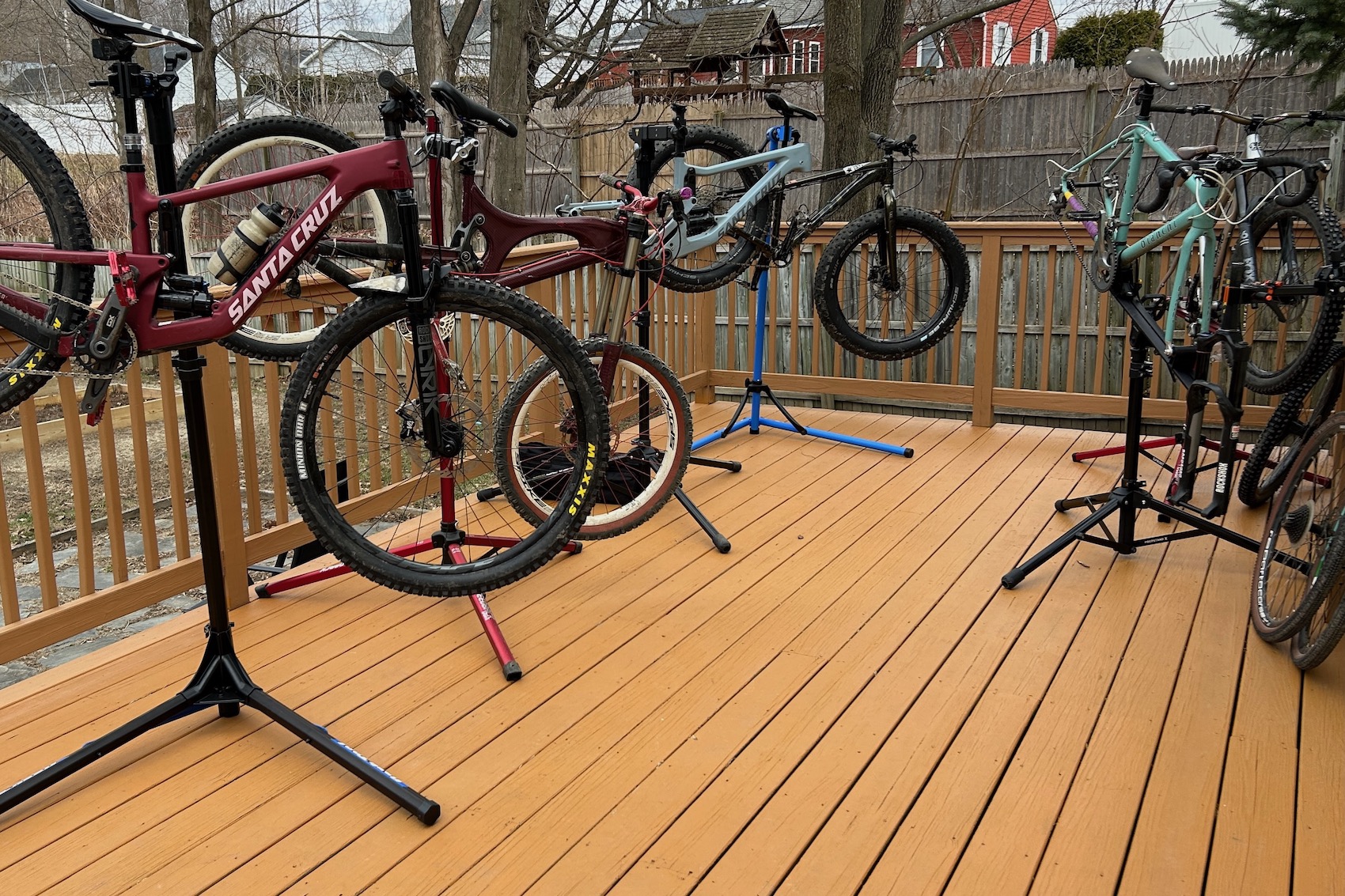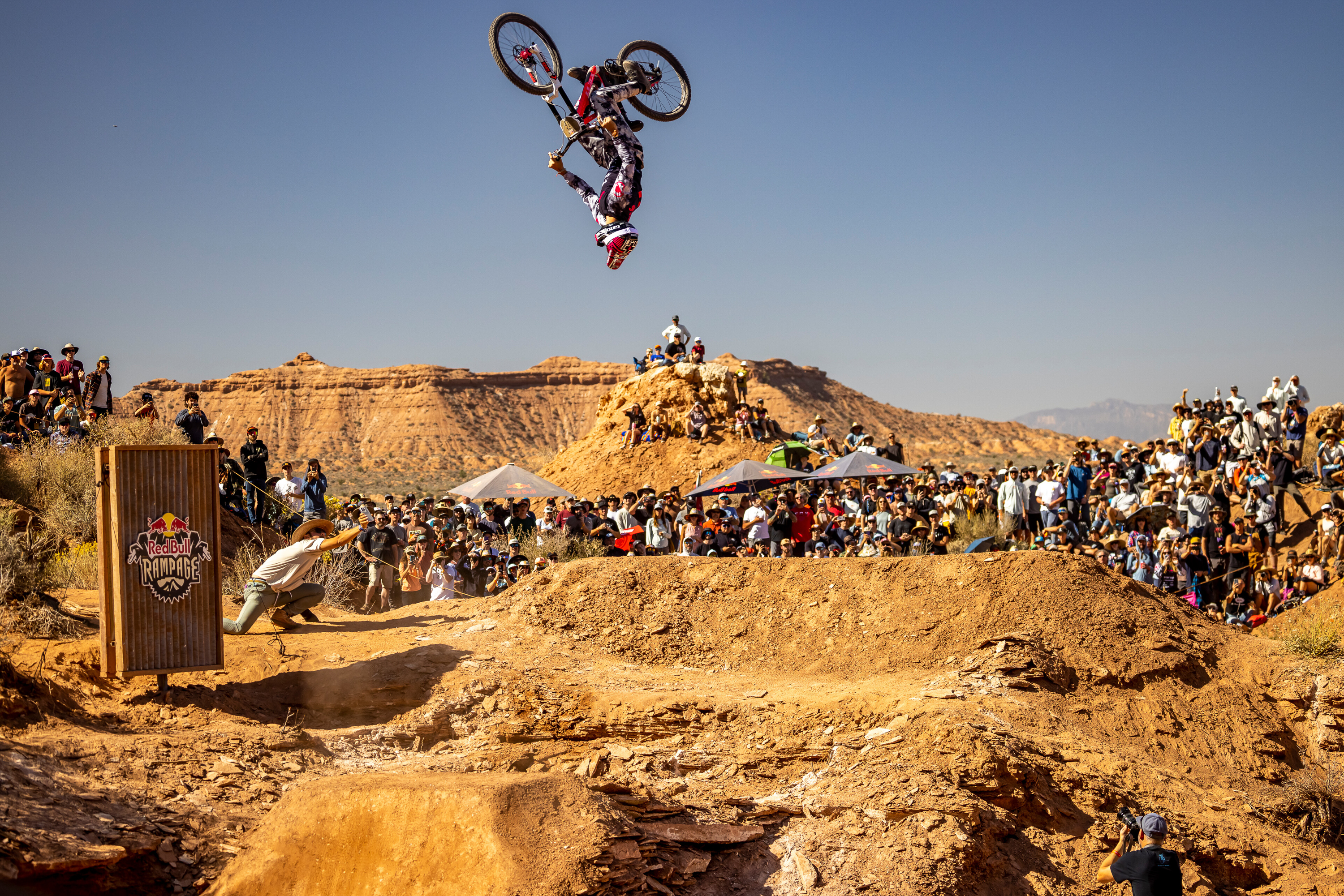Thömus has had very little exposure in our stateside cycling market. The brand recently opened a U.S. headquarters, hoping to increase its presence in our burgeoning mountain bike scene. Continued World Cup race success should bolster those efforts.
As the name suggests, the Lightrider World Cup is a race-bred machine. One look at the frame’s generous tube dimensions tells the pilot that there will be no wattage leaks. But will this translate to a mountain bike consumers will buy? Not all of us are watt weenies.
I tested the Thömus Lightrider World Cup for 2 months. I rode it on faster, hardpacked, and rocky trails surrounding Austin, Texas. Indeed, the bike efficiently transferred power from the pedals to the rear wheel like a race bike should. But the bike also proved fun, especially on terrain I would categorize as “XC Plus.”
In short: The Thömus Lightrider World Cup held its race heritage firmly, but the extended suspension travel compared to full-race spec added a bit of fun to the mix. The bike felt fast and efficient, transmitting power to the wheels and trail feedback to the rider in a way befitting a World Cup-winning machine. But the expanded suspension capacity made it more fun over longer durations and rougher terrain than a pure race rig.
- Frame material: Carbon fiber
- Shock: Fox Factory Float DPS
- Fork: Fox Factory 34
- Drivetrain: Shimano Deore XT
- Wheels: DT Swiss XM1700
Pros
- Efficient power transfer
- Sharp and precise handling
- Reliable and effective drivetrain and wheels
- Unique bike, uncommon in the U.S.
Cons
- Not as plush as other downcountry bikes
- U.S. presence is small; potential warranty and service issues
Who Is Thömus?
When I approached people on the bright red machine, I was often asked, “Who is Thömus?” as if it was someone’s name. Over the 2 months, no one on the trail recognized “Thömus.” The Swiss brand has notable achievements; founded in 1991, Thömus was the first to integrate cabling internally on road bikes. It also made the lightest full-suspension E-MTB, the Lightrider e-Ultimate.
The brand opened a concept store in Santa Monica, Calif., early last year. The retailer provides a purchasing solution for American mountain bikers interested in Thömus wares.
However, the Thömus Lightrider World Cup is no stranger to those who follow the professional World Cup mountain bike circuit. The bike has been at the front of the most prestigious professional cross-country mountain bike races. Victorious pilots include Mathias Flückinger, Alessandra Keller, and Lars Foster.
Test Bike Specifications
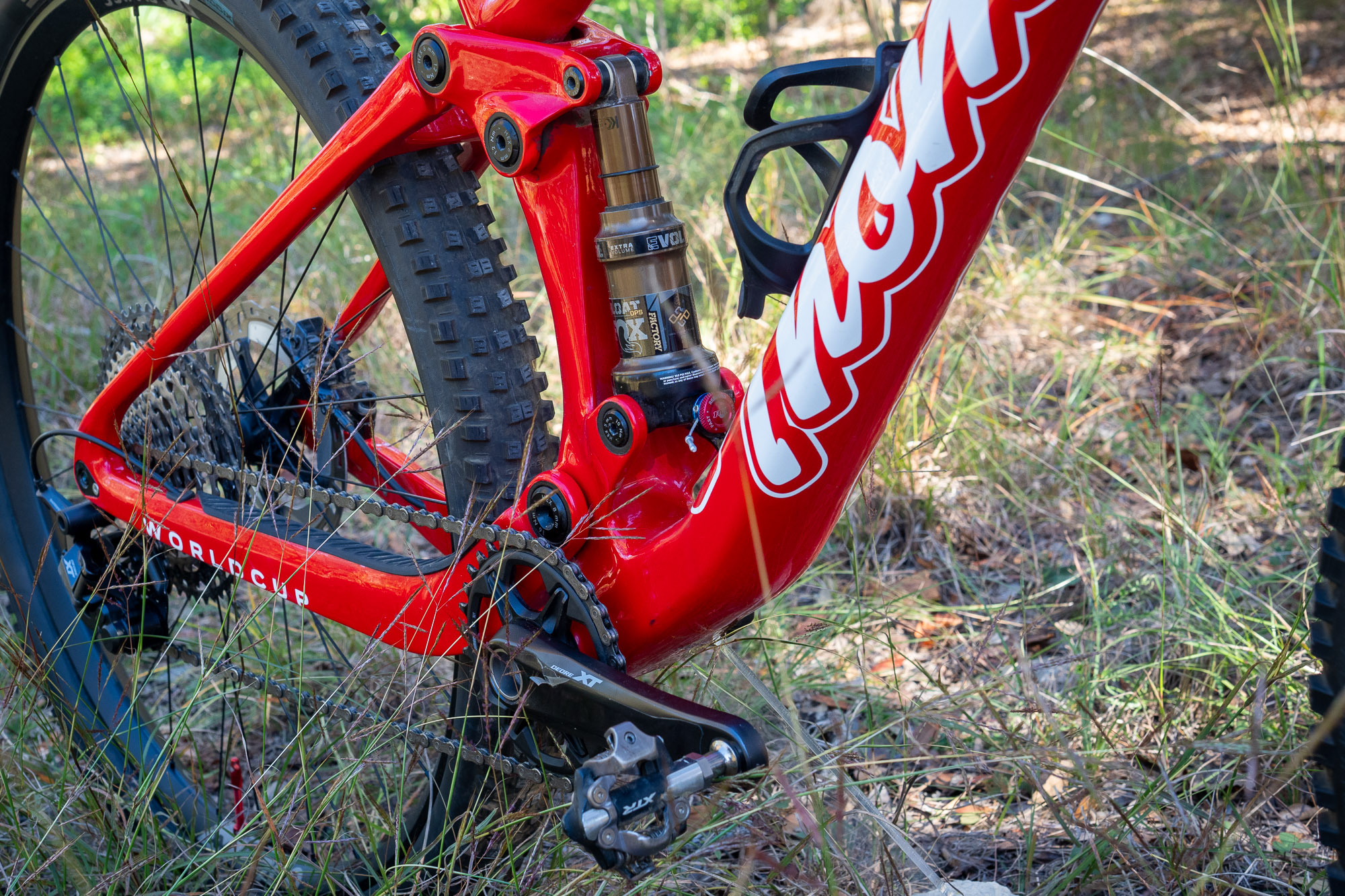
Our test bike differed from the World Cup-winning machines due to the longer 120mm front and 110mm rear suspension. This allowed the bike to handle more variable terrain and suit a wider range of potential customers.
Our bike was outfitted with Shimano Deore XT componentry, Fox Factory Float DPS shock, 34 forks, and a Transfer dropper post. A Selle Italia SLR saddle, an Acros stem, and an in-house bar handled cockpit duties. DT-Swiss XM1700 wheels rounded out the package. The Lightrider World Cup in this format weighed a verified 26.8 pounds without pedals.
First Impressions of the Thömus Lightrider World Cup
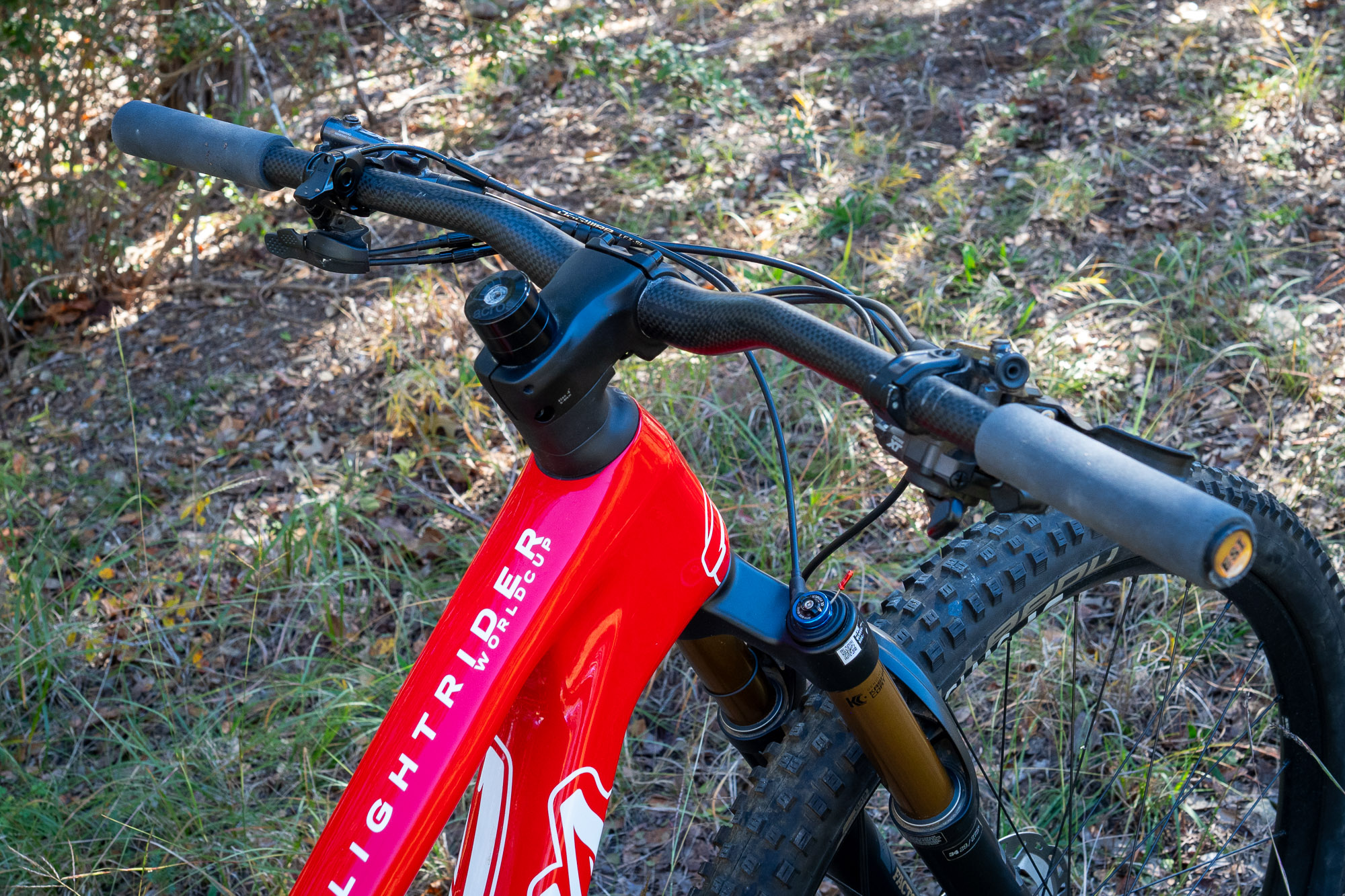
One look and the predominant thought was “stout.” The frame tubes, especially around the bottom bracket, looked large and encompassing. My immediate perceptions were that this bike would be stiff and efficient at power transfer but potentially rough handling. The latter point is especially so, since my local trails are mostly hardpacked and strewn with boulders and rocky ledges.
The parts spec made sense, considering the elongated travel applied to what was initially designed to be an XC racing rig. As such, it does weigh more than other XC racing-oriented mountain bikes.
The Thömus Lightrider World Cup looked and smelled like a hardcore, world title-winning cross-country mountain bike racing machine that had been given longer legs to potentially compete in the “downcountry” category. I was looking forward to testing my theory.
Trail Riding on the Thömus Lightrider World Cup
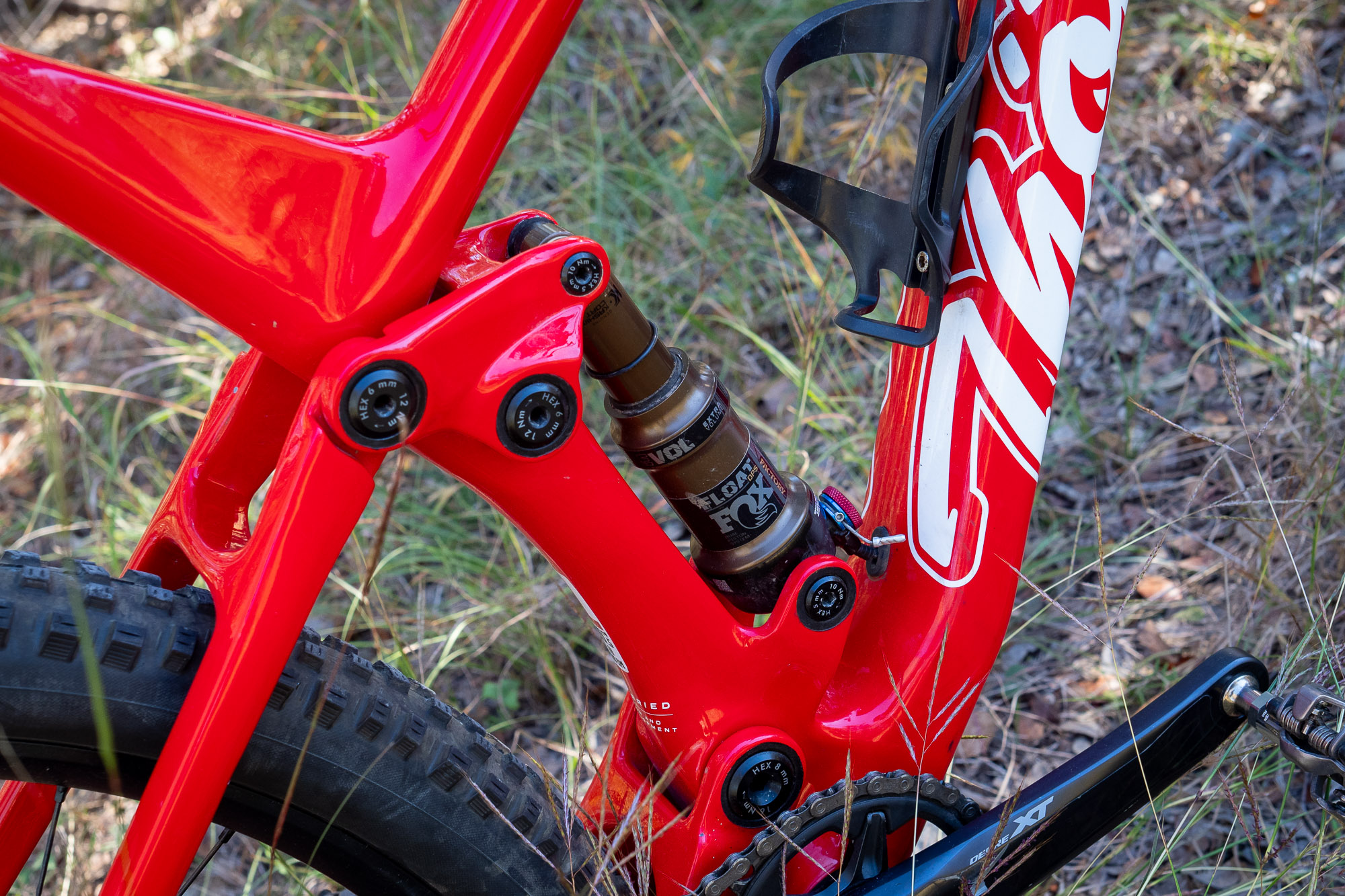
One of my favorite local trails opens up with flat, fast, hardpacked tracks littered with rocks and boulders from softball to ottoman size. I immediately felt the direct power transfer from the pedals to the rear tire as the frame’s stiffness refused to leak power.
I prefer mountain bikes with this feel on this particular trail. When riding on my own time, I always choose an XC-race bike. So, my first impression of this favored feeling was a positive one.
But a few unavoidable baby head boulders also told me this isn’t a trail bike. There is no leaning back and letting the bike “eat.” I had to pick the right lines, flicking around square edges and larger rocks.
When I missed, I felt that I had brought a knife to a gunfight. I didn’t feel like the Thömus Lightrider World Cup had the suspension and chassis compliance of other downcountry bikes I had tested.
But it was a sharp-handling rig, even though the elongated suspension travel slacked the original race bike angles. The laterally stiff frame and torsionally solid Fox fork were part of the equation. Turning on the Lightrider World Cup was a joy for a bike with longer-than-race suspension travel.
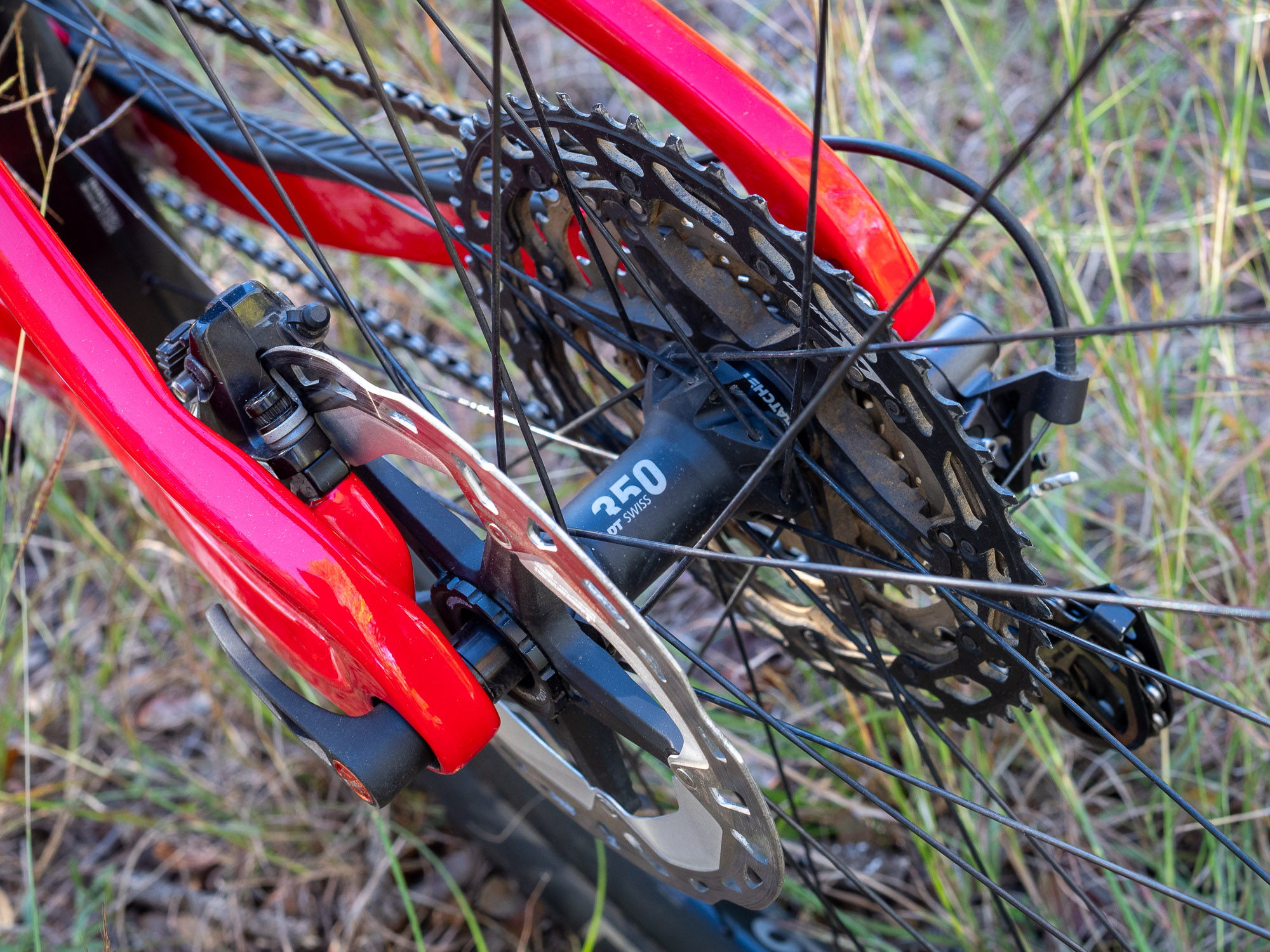
The bike had a more clickable feeling than other bikes in the downcountry category, like the Revel Ranger. Once I became familiar with how the bike bounced, this attribute of the Thömus Lightrider World Cup was my favorite. The chassis stiffness and suspension kinematics made it easy to pop off small trail obstacles.
However, the 110mm shock and 120mm fork gave me the leeway and confidence to huck it a bit further out onto less-than-ideal landings. I was finding ways to skip and hop across a trail I knew very well.
But I did feel the weight relative to pure race bikes like the Pivot Mach 4SL World Cup. The Lightrider World Cup is a few pounds heavier than it and other XC-race bikes I’ve ridden. When I had to get a bit sideways or implement a quick change of direction, the additional weight required a tad more forethought and force.
I also felt the same about preloading the suspension. I had to do it a little sooner with a touch more load to gain the intended flight path than a race bike. But then again, thanks to the plusher squish, I didn’t have to brace for the landing as much.
Finally, the bike absolutely flew down smoother, hardpacked, high-gear, high-torque straights, and windy fire roads. Churning a big gear rewarded me with incredible speed. This was where the stout frame had no negatives. I could feel the frame’s stiffness pay the expected dividends.
Who Is the Thömus Lightrider World Cup For?
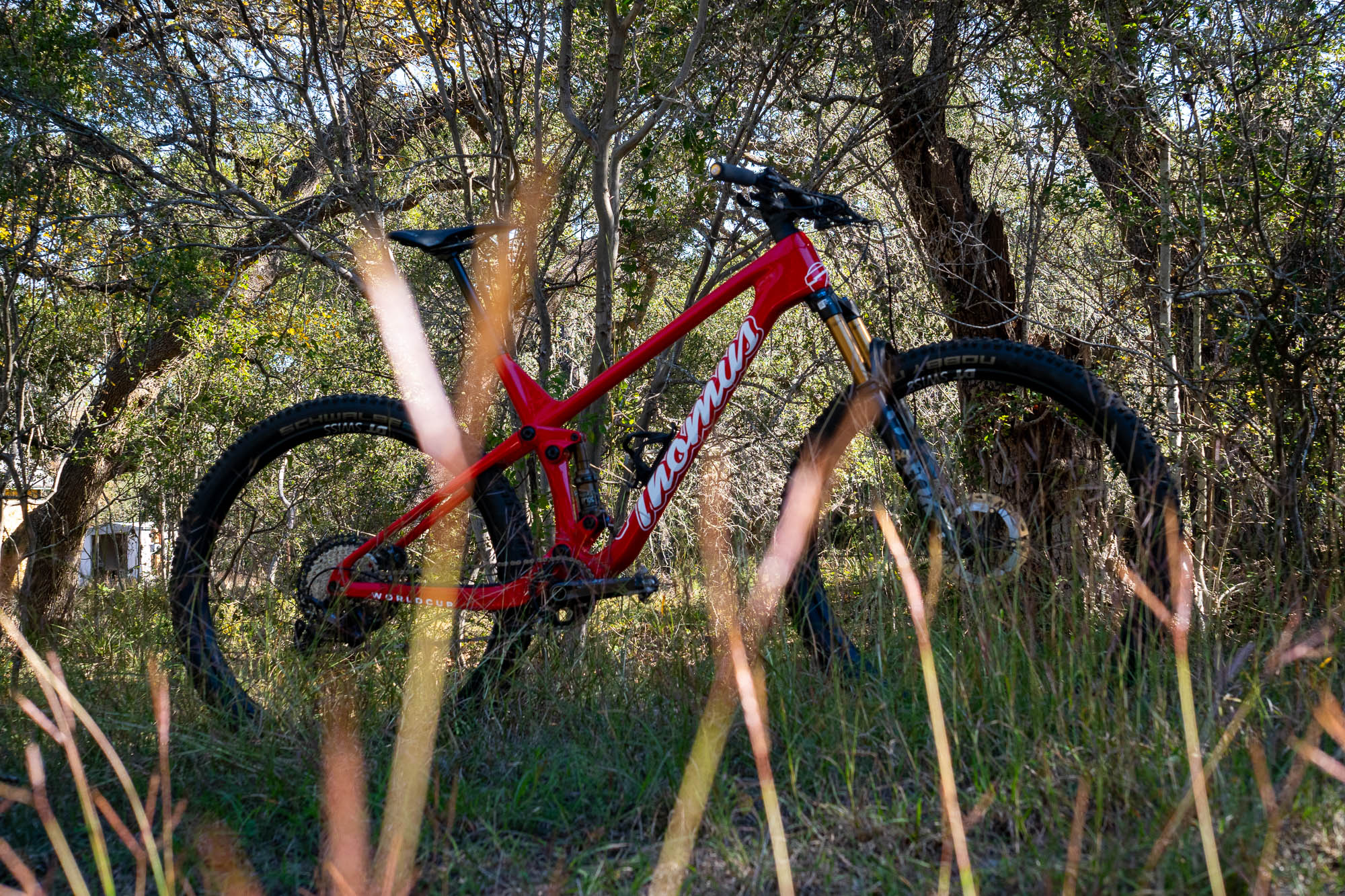
This was the ideal mountain bike for an ex-racer who rides faster, turn-oriented trails with a lot of pedaling. This rider isn’t interested in big drops or obstacles. This rider still has racing DNA, is still interested in speed, and appreciates efficient power transfer and fine directional control.
There may be the occasional bigger drop or need to huck a small gap. But this bike excelled primarily on fast trails that required constant pedaling. The fun came in the correct line choice, not gaining airtime, which turned out to fit me well.
Not to suggest yet another mountain bike category, but the Thömus Lightrider World Cup, with its longer legs, was a goldilocks. It was a little heavier, felt bigger and more plush, and handled slower than XC race bikes. But it was quicker handling and lighter, had a more compact feeling, and was more efficient than most downcountry models. It was the in-between the already in-betweens of the less-than-trail mountain bikes. Ugh. But also — fun!
The Thömus Lightrider World Cup also has the allure of rarity. The brand is still dipping its toes in the United States, so seeing another Ferrari Red Lightrider World Cup will be low odds.
The bike never failed to attract attention at water stops and trailheads, the bright color no doubt helping others notice. The huge white branding with the strange ö was also noticeable to local mountain bikers. If you desire to ride something different and uncommon, this can be that bike.
With an MSRP starting at $7,500, this is not a bike priced for a casual rider, and the performance characteristics tell the same story. But again, if you desire to rip at Mach 4 on trails with a bit more chunder than what is comfortable on a race rig, the Thömus Lightrider World Cup fits the bill.
